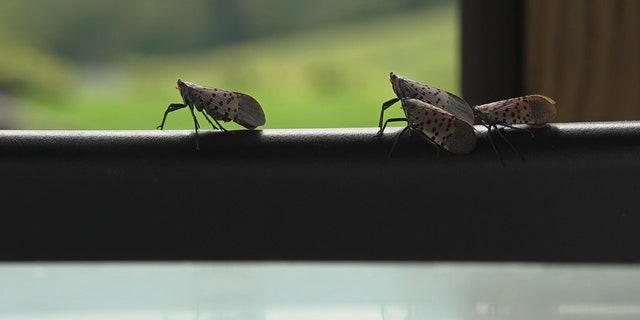Spotted lanternflies found in Ohio put Lake Erie wine producers on high alert
An invasive, plant-killing insect has been spotted in Ohio where it threatens the state’s lakeside grape growing and wine industries as well as other agricultural producers.
The spotted lanternfly (Lycorma delicatula) was identified in several areas of a local Cleveland park in August, according to officials, after first showing up in the state near the village of Mingo Junction in October 2020.
The invasive bug reportedly feeds on the sap of more than 70 plant varieties but poses a specific threat to grape vines and other fruit-baring plants.
The wine industry along Lake Erie, not even an hour from Cleveland, is now on high alert although the invasive insect has not yet been seen there according to South River Vineyards owner, Gene Sigel, who also manages several other vineyards in the area.
SPOTTED LANTERNFLY: WHAT YOU NEED TO KNOW ABOUT THE INVASIVE INSECT
“I’m surprised it took so long for them to make it to Cleveland but once they arrive they’re everywhere,” Sigel said. “Right now, we haven’t seen them, but if they become a reality here we’ll have to deal with them the same way we’ve had to with other pests.”
Sigel told Fox News that Ohio’s wine-making industry or “grape belt,” which includes as many as 350 wineries, may not survive if the invasive insect continues to spread.
“These bugs attack the base of the vine, so we would have to change our whole method of farming to where we bring in new vines every year … it’s possible to do but it’s not sustainable for every producer,” Sigel said.
The spotted lanternfly, which is native to China, was first detected in Pennsylvania in 2014. The black and red insects have now appeared in at least 12 states including Connecticut, Delaware, Indiana, Maryland, Massachusetts, New Jersey, New York, North Carolina, Ohio, Pennsylvania, Virginia, and West Virginia.
NORTHEAST RESIDENTS TOLD TO DESTROY INVASIVE INSECT
While the species doesn’t fly far, researchers say they’re great hitchhikers. In Ohio, it’s believed the insects likely traveled to Cleveland by laying their eggs on a train.
“It’s not a matter of ‘if’ the next pest is going to come and threaten our forests but when is it going to come,” said Jennifer Kipp, Manager of Urban Forestry for the Cleveland Department of Public Works.

Kipp said early sightings of the spotted lanternfly reminded her of what Cleveland endured when another invasive species, the emerald ash borer, nearly wiped out the city’s ash tree population – although, she’s more hopeful this time around.
“I think that we’re fortunate in the Cleveland area because the spotted lanternfly probably won’t have the same impact on our trees, which don’t really have fruit … it may not cause as many problems as the emerald ash borer did,” she said
In higher-risk areas, the spotted lantern fly could drain hundreds of millions from the agricultural trade of several states if not contained, according to different estimates.
However, Dr. Mark Willis an entomologist and professor biology at Case Western Reserve University, says it won’t be easy to stop them.
SPOTTED LANTERNFLIES FOUND IN NORTHERN INDIANA
“They can actually drain a lot of the nutrients the plant is making, affecting fruit size and quantity,” Willis said. “And it has no local parasites, no predators, it has no diseases, so there’s no clamp on the population size.”
To mitigate the spread, many states have asked the public to change certain behaviors.

In Virginia, for example, agriculture officials have asked people to only buy firewood locally and to burn it before spotted lanternfly eggs hatch in May. In New York, officials have urged residents to “kill on sight” if they spot the invasive pest.
“You know, you’d help us all out if step on it. I think that’s not a horrible thing and I actually like insects,” Willis said. “You can also scrape the insects into a plastic bag and fill it with hand sanitizer or throw it in the freezer.”
As far as permanent solutions go, Willis told Fox News that some researchers have considered introducing a “control species,” a parasite or pest from Asia that would prey upon the spotted lanternfly, so long as it doesn’t become a problem itself.
Read the full article Here


